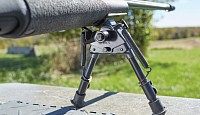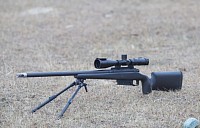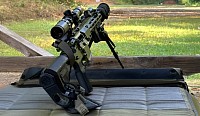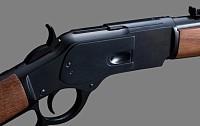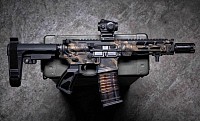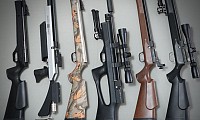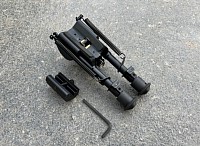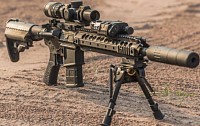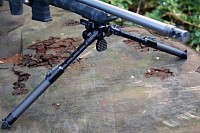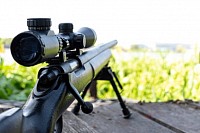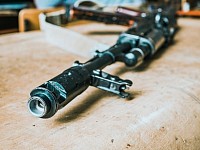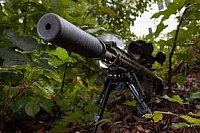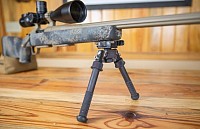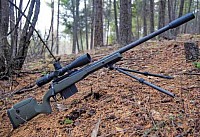Precision Parts That Elevate Modern Rifle Performance
The rifle parts market continues to evolve with smarter materials, tighter tolerances, and designs that squeeze more accuracy from every shot. Today’s shooters expect components that install cleanly, run reliably, and deliver repeatable results in a variety of environments. From the gas system to the barrel to the support equipment under the forend, the details matter—and the payoff is consistency.
How Gas Systems Shape Reliability
A rifle’s cycling characteristics begin with the gas system. The gas port location, tube length, and buffer pairing dictate recoil impulse and timing. A properly spec’d gas tube that aligns without stress reduces premature wear and ensures smooth cycling. Many builders prefer a rifle length gas system for its softer impulse and extended dwell time, which can translate to flatter tracking and less parts fatigue. Matching quality components and verifying clear gas flow can prevent short-stroking, over-gassing, and erratic ejection patterns.
Barrel Choices That Drive Accuracy
Barrel quality remains the single greatest influence on precision potential. Premium blanks, consistent rifling, and stress-relieved steel reduce shot-to-shot variation. Criterion barrels are a popular choice among builders seeking dependable sub-MOA performance with broad ammunition compatibility. Their machining and chambering are designed to minimize runout and promote uniform bullet release. For users who want a balanced profile with modern accuracy features, the criterion core 42 concept emphasizes stiffness where it counts without creating a nose-heavy feel. Proper torque, concentric muzzle devices, and a stable receiver interface round out the accuracy stack.
Stability and Support in Field Conditions
Prone and supported shooting benefit from gear that locks the rifle in place while still allowing moment-to-moment adjustments. Bipods for rifle platforms have grown lighter, stronger, and more adaptable, with low-profile mounting, multi-position legs, and smooth cant and pan mechanisms. A stable bipod shortens the time it takes to settle into position, especially on uneven surfaces. Pair that with a rear bag or minimalist support, and groups tighten as body movement translates less into the reticle.
- Select a bipod with secure lockup and fine leg increments
- Verify rail or stud interface is rigid and aligned
- Balance overall weight to keep the rifle lively but steady
- Practice transitions to engage targets at multiple elevations
Tuning for Consistency and Comfort
Recoil management affects sight picture and follow-through. Gas tuning, buffer weights, and spring rates work together to create a controllable pulse. With a rifle length gas system, many shooters experience less dot bounce and faster recovery, particularly with well-matched ammunition. A clean, consistent trigger press matters too, but only after the fundamentals of gas flow and barrel fit are addressed. Keep an eye on carbon build-up; a fouled gas tube can cause sluggish cycling and inconsistent brass ejection patterns.
Maintenance and Longevity
Regular inspection pays off. Confirm that handguard fasteners remain torqued, the gas block is properly aligned, and the crown is undamaged. Periodically verify that the bipod’s hardware is tight and that pivot points move smoothly. Monitor throat erosion in high-round-count barrels and keep records of accuracy trends over time. When performance begins to drift, small checks—mount screws, optic base tension, suppressor alignment—often reveal simple fixes.
The modern rifle thrives when each component supports the next. Thoughtful barrel selection, well-tuned gas timing, and solid field support gear combine to produce a platform that’s predictable, forgiving, and precise. With careful assembly and routine maintenance, shooters can build a rifle that performs consistently across disciplines—from casual range sessions to demanding practical stages—while keeping upgrades modular and future-ready.
Precision Setup for Modern Sporting Rifles: Parts, Optics, Lights, and Accessories That Matter
The rifle aftermarket continues to evolve as shooters demand parts that balance accuracy, reliability, and ergonomics. From barrels and buffer systems to illumination and magnification, the goal is smooth function paired with repeatable precision. Thoughtful component selection, proper installation, and consistent maintenance are the foundations for a dependable build that performs on the range, in competition, or during field use.
Main Considerations for a Reliable Platform
Selecting the heart of the system begins with the barrel and the operating components that support it. Materials, profiles, and gas dynamics all contribute to recoil characteristics and shot-to-shot stability. Mated with quality optics and durable lights, the result is a cohesive setup that remains consistent across round counts and environmental conditions.
Barrel Choices and Performance
Barrels determine the bulk of mechanical accuracy. Steel composition, rifling method, and chamber specs all play roles in precision and longevity. Many builders look to criterion barrels for consistent bore quality and repeatable results. The profile influences heat management and balance; heavier contours resist thermal shift, while lighter options aid maneuverability. For those seeking a balanced mid-weight solution, some gravitate to a profile like criterion core 44 naturally for its blend of handling and heat control. Proper torque on the muzzle device and a concentric interface with the bore also support stable dispersion.
Gas System and Cycling
Gas regulation affects recoil impulse and reliability under varied loads. Matching a gas tube to the barrel’s port position and length is essential. For longer barrels and softer cycling, a rifle length gas system can smooth out the pressure curve, reducing wear on internals and aiding follow-up shots. Correct alignment of the block, secure set screws or pins, and leak-free interfaces ensure consistent dwell time. Pairing the system with a properly weighted buffer and spring further refines ejection pattern and return-to-battery consistency.
Stability and Support
Support equipment translates mechanical accuracy into practical precision. Bipods for rifle use provide a stable front anchor, helping shooters manage recoil and maintain sight picture. Look for adjustable cant and tension controls to accommodate uneven terrain. A solid rear bag, or a stock with an articulate toe, allows fine elevation adjustments. These elements shrink groups by minimizing human-induced movement, especially during longer strings where fatigue can creep in.
Optics, Lights, and Practical Accessories
Clarity, durability, and repeatable tracking are the hallmarks of dependable optics. Choose magnification ranges appropriate to your typical distances, with reticles that offer holdovers rather than constant dialing. Rugged weapon lights with ergonomic switches enhance target identification in low light. Mount selection matters: secure clamping, proper torque, and return-to-zero characteristics are vital. Additional accessories such as sling systems, ergonomic grips, and ambidextrous controls improve handling and manipulations without compromising reliability.
Setup Checklist for Consistency
1) Verify barrel nut torque and ensure free-float handguard clearance along the entire length.
2) Align the gas block with the port; confirm a secure gas tube fit and unobstructed carrier key.
3) Choose an appropriate buffer weight and spring to complement a rifle length gas system.
4) Level optics carefully, torque rings to spec, and confirm tracking with a simple box test.
5) Zero irons and optics at your preferred distance, documenting settings for various loads.
6) Install bipods for rifle stability; adjust cant and leg length to match your shooting position.
7) Confirm reliable function with your intended ammunition across clean and lightly fouled states.
8) Record environmental data and build notes to replicate performance over time.
A refined rifle is the sum of well-chosen components and careful setup. Quality barrels like criterion barrels, a properly tuned gas tube and block arrangement, supportive accessories, and trustworthy optics and lights combine to deliver predictable results. With attention to detail and a focus on fundamentals, shooters can build a platform that remains accurate, controllable, and dependable across a wide range of scenarios.
Precision Rifle Setup: Parts, Optics, Lights, and Accessories That Matter
The modern rifle marketplace is rich with options, but putting together a cohesive setup still takes thoughtful choices. Whether the goal is practical competition, field use, or range training, success hinges on pairing reliable parts, capable optics, dependable lights, and purpose-built accessories. This guide breaks down core considerations that help shooters assemble systems that perform consistently in a wide range of conditions while remaining easy to maintain and upgrade over time.
Main Considerations for a Balanced Build
Building a capable rifle starts with a clear purpose. Define typical shooting distances, preferred ammunition, and intended environments. From there, prioritize components that work together, not just individual features. Quality control, compatibility, and long-term serviceability matter as much as raw performance. Keep upgrades modular so each change improves function without introducing new variables.
Barrels, Gas Systems, and Reliability
Consistency begins with the barrel. Durable profiles with well-executed rifling help stabilize ammunition while managing heat through longer strings. Many shooters appreciate the proven track record of criterion barrels for accuracy and repeatability under varied conditions. Coupled with a tuned gas path, a rifle can feel noticeably smoother. Choosing a rifle length gas system can reduce impulse and improve shot-to-shot control, especially when paired with a matched gas tube and properly sized buffer setup. Attention to alignment, torque, and thread cleanliness during assembly prevents premature wear and erratic cycling.
Ammunition, Zeroing, and Optic Choices
Optics should match shooting goals. A low-power variable optic suits dynamic applications with occasional distance work, while a mid-power scope may better serve precision at extended ranges. Confirm a stable mount, maintain consistent eye relief, and establish a dependable zero with the chosen ammunition. Re-verify zero after maintenance or transport. Clear, repeatable turrets and sensible reticles streamline holds and corrections, especially in wind. A white-light setup with tailored output helps in low-light environments without overpowering the field of view.
Accessories That Add Real Capability
Purpose-driven accessories amplify effectiveness without clutter. Lightweight, rigid handguards aid grip and support thermal management. A stable rest can be the difference between a hit and a near miss, which is why many shooters prioritize bipods for rifle applications, especially when prone or using barricades. Quality triggers reduce input error, while control surfaces—charging handles, selectors, and grips—improve ergonomics and repeatability. Keep the layout clean, intuitive, and consistent across platforms.
Key Steps for a Reliable, Accurate Rifle
1) Select a quality barrel, such as criterion barrels, that suits your shooting distances and ammo choice.
2) Choose a rifle length gas system when appropriate to smooth recoil; pair it with a correctly sized gas tube and buffer.
3) Install a dependable trigger with a consistent break and reset to enhance shot control.
4) Mount optics with repeatable hardware and verify zero on a stable rest; confirm after any changes.
5) Add bipods for rifle stability during prone or supported positions to tighten groups.
6) Integrate a durable white light with smart switching so it’s usable under stress without washing out the target area.
7) Maintain a regular cleaning schedule, inspecting the gas tube, crown, and fasteners to prevent cycling issues.
8) Keep spare small parts—pins, springs, and batteries—on hand to avoid downtime.
Advanced Notes on Materials and Profiles
Material choice and profile shape influence heat behavior and handling. Some barrel designs, like criterion core 45 naturally tapered profiles, aim to balance weight and stiffness for practical accuracy without excessive front-end mass. This approach can smooth transitions, maintain harmonics through heat cycles, and keep the rifle lively in positional shooting. Combined with a tuned gas system, the rifle returns to target faster and stays manageable through longer stages.
A reliable rifle is the result of compatible parts, thoughtful setup, and disciplined maintenance. Focus on quality barrels, a well-matched gas system, a clear optic, a dependable light, and accessories that deliver stability and control. When every component reinforces the next, performance becomes predictable, and training time is spent refining skill instead of troubleshooting gear.
Enhancing Your Firearm with the Eotech Magnifier G45
For firearm enthusiasts and professionals alike, the right accessories can make a significant difference in performance and precision. Whether you're honing your skills at the range or relying on your equipment for professional duties, investing in quality parts and accessories is essential. This article will explore how an innovative optic accessory like the eotech magnifier g45 can enhance the capabilities of your firearm setup.
1. Achieving Greater Accuracy at Range
Optics play a crucial role in achieving pinpoint accuracy over long distances. The eotech magnifier g45 is designed to work seamlessly with holographic sights, offering an additional layer of magnification that allows shooters to engage targets at extended ranges more effectively. With its high-quality glass and reliable magnification power, this accessory provides a clear view of distant targets, making it easier for you to take accurate shots with confidence.
2. Quick Transition Between Close and Long Range
One key advantage of incorporating an eotech magnifier g45 into your firearm gear is the ability to quickly transition between close-quarters combat (CQC) scenarios and longer-range engagements without needing multiple optics or adjustments. This flexibility is invaluable in dynamic shooting situations where split-second decisions could be critical. The flip-to-side mount design enables users to rapidly switch between unmagnified and magnified viewing, ensuring that you are prepared for any scenario that arises.
3. Durability Under Harsh Conditions
Firearm products, especially those used in outdoor settings or under demanding conditions, must be built to last. The eotech magnifier g45 is constructed with rugged durability in mind, capable of withstanding recoil shock from high-caliber weapons as well as environmental stressors such as rain, dust, and extreme temperatures. This resilience ensures that your investment remains protected even when exposed to harsh field conditions.
4. Compatibility with Various Firearms
The versatility of firearm accessories is important for owners who possess multiple platforms or those who might upgrade their equipment frequently. The eotech magnifier g45 boasts broad compatibility across different firearms types—whether you're using it on a rifle or carbine platform—without requiring complex modifications or specialized tools for installation. Its adaptability makes it an excellent choice for shooters looking to enhance various firearms within their collection.
5. Enhancing Overall Shooting Experience
Ultimately, adding a high-performance optic like the eotech magnifier g45 to your arsenal doesn't just improve accuracy—it also enriches the overall shooting experience by providing better visibility and engagement control. For recreational shooters, this means more enjoyable time spent on target practice; while professionals will appreciate the added reliability during critical operations.
In conclusion, integrating quality firearm products such as parts, optics like the eotech magnifier g45, lights, and other accessories into your setup can significantly improve performance on various fronts—from increasing range accuracy to ensuring durable operation under tough conditions. For those seeking reliable enhancements for their firearms without compromising on quality or value, exploring options like the eotech magnifier g45 provides a clear path toward achieving greater proficiency and enjoyment in their shooting endeavors.
By prioritizing these aspects when selecting your firearm accessories from Virtus Precision's carefully curated selection—a provider committed to delivering top performance gear—you equip yourself not just with tools but also with confidence that every component attached to your weapon system has been chosen for its ability to deliver results when they matter most.
Enhancing Your Firearm with High-Performance Accessories
In the world of firearms, enthusiasts and professionals alike understand that the right accessories can significantly enhance the performance and functionality of their weapons. Whether for competitive shooting, hunting, or personal defense, tailoring your firearm with high-quality parts, optics, lights, and accessories is crucial for optimal operation. This article will delve into how incorporating premium accessories can transform your firearm experience.
1. The Importance of Battery Choice
One critical component often overlooked by firearms owners is the battery powering their accessories. The surefire 18350 battery has become a popular choice among users due to its reliability and compact size. Designed for high-drain devices like tactical flashlights and laser sights, these batteries provide consistent power output without adding excessive weight or bulk to your setup.
2. Advancements in Optics Technology
Optics have come a long way from traditional iron sights. Modern advancements allow shooters to acquire targets faster and with greater accuracy than ever before. Red dot sights, holographic sights, and variable magnification scopes offer options for every scenario—be it close-quarters engagement or long-range precision shooting. Quality optics are essential for those who demand quick target acquisition and pinpoint accuracy from their firearms.
3. Tactical Lights: A Critical Accessory
Illumination tools are no longer just add-ons; they are critical components for defensive situations and nighttime operations. A robust tactical light mounted on a firearm can disorient potential threats while providing the shooter with clear visibility in low-light conditions. Features such as strobe functions and adjustable beam patterns make these lights versatile tools that can be adapted to various environments.
4. Customizing with Parts & Accessories
Customization allows firearm owners to tailor their weapons to specific needs or preferences. Upgraded triggers can improve pull weight and reset speed, enhancing overall control during firing sequences. Stocks and grips provide better ergonomics for increased comfort and stability when shooting. Meanwhile, rail systems enable the attachment of multiple accessories simultaneously without sacrificing accessibility or maneuverability.
5. The Benefits of Modular Systems
Modularity in firearm design has revolutionized how users think about accessory integration. With modular systems, shooters can quickly swap out components based on situational requirements without needing specialized tools or extensive modifications to their weapons platform—this flexibility ensures that one's firearm remains adaptable to evolving needs over time.
For those seeking reliable parts and innovative solutions in San Gabriel, CA., Virtus Precision delivers an array of high-performance products designed to elevate your shooting proficiency regardless of application or skill level.
By carefully selecting each accessory—from surefire 18350 batteries powering your tactical lights to precision-crafted optics—you invest not only in the functionality of your firearm but also in your capabilities as a shooter. These enhancements contribute to improved accuracy, faster response times, heightened awareness in diverse conditions—and ultimately—a more satisfying experience at the range or in the field.
In conclusion, personalizing your firearm with quality accessories offers tangible benefits across all aspects of gun ownership and use—whether you're focused on competitive shooting sports or ensuring preparedness for any scenario that may arise.
Virtus Precision stands ready to support this journey towards enhanced performance by providing a curated selection of industry-leading products combined with unparalleled customer service—empowering you every step along this path towards achieving excellence within your marksmanship pursuits.
Understanding the Importance of a Quality Gas Tube in Firearm Functionality
In the realm of firearm products, intricate parts play pivotal roles in ensuring the smooth and reliable operation of a weapon. Among these critical components is the gas tube, an essential element in the mechanics of gas-operated firearms. The design and maintenance of a gas tube significantly affect performance, longevity, and safety. Let's delve into why this part is so vital and how it fits into the broader spectrum of firearm accessories.
1. Role of a Gas Tube in Firearm Operation:
A gas tube is integral to semi-automatic and automatic firearms that utilize gas-operated systems. Its primary function is to channel expanding gases generated upon firing from the barrel back towards the bolt carrier group. This process cycles the action, ejecting spent cartridges while simultaneously chambering new rounds for subsequent shots. The efficiency with which a gas tube performs this task directly influences firing consistency and rate.
2. Material Durability:
Given its crucial role in firearm operation, a gas tube must withstand extreme temperatures and pressures repeatedly without degrading. High-quality materials such as stainless steel are commonly used for their ability to resist heat-induced wear or corrosion over time—a crucial consideration for maintaining long-term reliability.
3. Precise Manufacturing:
Accuracy in manufacturing ensures that a gas tube fits correctly within a firearm's architecture without causing undue friction or impeding movement. Precision-cut dimensions allow for seamless integration with other components, thereby contributing to overall system harmony and reducing potential malfunctions.
4. Compatibility with Accessories:
Firearms often require customization through various accessories like optics, lights, and additional parts to meet individual needs effectively. A well-designed gas tube accommodates these enhancements by not interfering with attachment points or sight lines—further testament to its importance within an accessory-compatible ecosystem.
5. Maintenance Considerations:
Like all mechanical systems, cleanliness and maintenance are paramount for optimal functionality. A quality gas tube should be designed for ease of access when routine cleaning is required to prevent blockages or build-up that could otherwise compromise performance.
Enhancing Rifle Performance with Quality Components and Accessories
Precision in shooting is not just a matter of skill but also heavily depends on the quality of your firearm and its components. For enthusiasts and professionals alike, understanding the importance of having reliable firearm parts and accessories can make a significant difference in performance. In this article, we will delve into how certain key components, such as rifle bipods, gas tubes, rifle length gas systems, criterion barrels, and the Criterion Core 45 can enhance the functionality and accuracy of your rifle.
1. Rifle Bipod for Stability
A rifle bipod serves as an essential tool for shooters aiming to improve their accuracy over long distances. The bipod provides a stable platform that helps to reduce movement and sway while aiming. One of the primary benefits of using a bipod is its ability to significantly decrease shooter fatigue during extended periods in the field or on the range. By allowing shooters to rest their firearm securely, precision is improved, making those critical shots count when it matters most.
2. Gas Tube Precision
The gas tube is a vital part of any gas-operated rifle's firing system. It channels the propellant gases from the fired cartridge back into the action to cycle the bolt carrier group. The exactness with which these tubes deliver gases directly impacts recoil management and shot follow-up speed. A well-manufactured gas tube ensures consistent cycling of rounds without compromising on reliability or causing undue wear on other parts.
3. Rifle Length Gas System Benefits
Choosing a rifle length gas system offers several advantages for longer-barreled rifles typically used in marksmanship roles or hunting scenarios where precision is paramount. A longer gas system allows for smoother operation due to lower pressure levels acting upon the bolt carrier group over a more extended period—this leads to less felt recoil and contributes to better shooting comfort and control.
4. Criterion Barrels for Accuracy
Barrel choice directly influences shooting accuracy, and criterion barrels are renowned for their precision engineering. These barrels are designed with tight tolerances and exceptional bore uniformity which translates into greater shot-to-shot consistency—essential for achieving tight groupings at various ranges. A barrel that can maintain its structural integrity under heat stress will keep delivering accurate shots round after round.
5. Criterion Core 45 – Optimized Shooting Experience
The Criterion Core 45 encompasses cutting-edge design tailored towards enhancing user experience through optimized weight distribution and harmonics reduction within the barrel itself. This innovation leads to increased accuracy potential by minimizing barrel whip during firing sequences—a trait particularly beneficial under rapid-fire conditions or when engaging multiple targets successively.
In addition to these critical components, supplementing your firearm with high-quality optics, lights, and other accessories can further refine your shooting experience. Optics provide clear sightlines for better target acquisition; lights can illuminate low-light environments ensuring visibility; additional accessories like grips enhance handling ergonomics contributing to better overall control of your weapon system.
For those looking to upgrade their firearms setup or maintain peak performance levels out in the field or at competitive events - investing in tried-and-tested parts like those mentioned above is indispensable. Each component plays a role in creating an efficient firing platform that behaves predictably every time you pull the trigger—giving shooters confidence whether they're protecting home turf or lining up that perfect shot at significant distances.
Ultimately, choosing high-quality components from reputable suppliers who understand both professional demands and recreational needs is crucial in achieving top-tier firearm performance—with reliability you can count on when it counts most.
Enhancing Rifle Performance with Quality Components and Accessories
For enthusiasts and professionals alike, the customization of a rifle is both an art and a science. It requires not only an understanding of the firearm's mechanics but also a selection of quality components that can enhance performance, reliability, and accuracy. Here are five critical aspects to consider when upgrading your rifle for optimal function and precision.
1. The Importance of a Reliable Rifle Bipod
A stable shooting platform is essential for achieving consistent accuracy, especially at long ranges. A rifle bipod provides this stability, allowing shooters to rest their firearm securely on various surfaces. The right bipod should be sturdy yet lightweight and offer adjustability to suit different terrains. Whether you're engaged in precision shooting or require steadiness in rugged conditions, investing in a durable bipod can significantly improve your marksmanship.
2. Choosing the Correct Gas Tube for Your Rifle
The gas tube is a vital component of any gas-operated rifle system, playing a pivotal role in cycling the action reliably with each shot fired. When selecting a gas tube, it's crucial to match it with your rifle length gas system to ensure proper timing and function. A mismatched gas tube can lead to cycling issues or excessive wear on internal parts. Therefore, make sure your chosen gas tube corresponds accurately with your rifle's specifications.
3. Benefits of a Rifle Length Gas System
Rifle length gas systems are preferred by many shooters due to their smoother recoil impulse and reduced wear on internal components compared to shorter systems. This setup uses a longer gas tube which results in lower operating pressures because the gas has more time to expand before reaching the bolt carrier group. The result is less stress on parts and potentially greater longevity for your firearm.
4. Upgrading with Criterion Barrels
Barrel quality directly influences accuracy, and upgrading to criterion barrels can provide numerous benefits for serious shooters. Known for their precision manufacturing process, criterion barrels are designed for those who demand superior performance from their rifles without compromise. These barrels undergo rigorous testing procedures ensuring consistent bore dimensions and tighter tolerances, translating into improved shot-to-shot consistency.
5. Exploring the Criterion Core 44 Lineup
The Criterion Core 44 series represents cutting-edge design integrated into barrel production; these barrels cater specifically to .44 caliber applications known for their robust construction and exceptional accuracy potential. Their advanced engineering ensures optimal velocity while maintaining precise harmonics across various shooting conditions – an advantage that discerning marksmen will appreciate.
In summary, enhancing your rifle's capabilities involves careful consideration of each component added or replaced – from the support provided by a reliable bipod to the precision offered by high-quality barrels like those from Criterion Core 44 lineup. With thoughtful upgrades tailored to individual needs and preferences using reputable products such as optics, lights, accessories from Virtus Precision ensures that every shooter can achieve peak performance under any circumstance they may face out in San Gabriel or beyond its borders.
Enhancing Rifle Performance: The Role of Precision Components
When it comes to optimizing the performance of a rifle, every detail counts. From the stability provided by a well-crafted bipod to the precise fit and finish of a gas system, each component plays a crucial role in ensuring accuracy, reliability, and overall effectiveness. In this discussion, we'll delve into how specific firearm parts such as bipods, gas tubes, and barrels contribute to superior rifle functionality.
1. Stability with Rifle Bipods:
The importance of a steady shot cannot be underestimated, especially in competitive shooting or hunting. A high-quality rifle bipod serves as the foundation for this stability. It allows shooters to set up their rifle on various terrains while maintaining the necessary balance and support for precise aiming. Adjustable legs and pivot functionality can further enhance adaptability to uneven surfaces.
2. Gas System Efficiency:
The gas system of a rifle is essential for its cycling process; it uses the energy from fired cartridges to eject spent casings and chamber new rounds. A well-designed gas tube ensures that this energy is directed efficiently. The length of the gas system also plays a vital role – whether carbine, mid-length, or rifle length – in determining how much pressure is used to cycle the action, which can affect recoil and shot recovery times.
3. Barrel Excellence:
The barrel is undoubtedly one of the most critical components affecting a rifle's accuracy. Criterion barrels are known for their precision manufacturing which includes rigorous quality control processes like air-gauging and lapping. Such attention to detail results in barrels that provide consistent accuracy round after round.
4. Advanced Rifling Techniques:
Rifling refers to the grooves cut or forged inside a barrel that impart spin on the bullet for better stability during flight. Advanced rifling techniques result in uniform groove dimensions that enhance bullet performance across different shooting conditions.
5. Comprehensive Accessories:
A wide range of accessories including optics, lights, and other add-ons enable shooters to customize their rifles according to specific needs or preferences. These enhancements not only improve visibility under varying light conditions but also aid in target acquisition speed and accuracy.
Enhancing Rifle Performance with Quality Components and Accessories
For shooting enthusiasts and professionals alike, the performance of a rifle is paramount. Whether for competitive shooting, hunting, or tactical operations, the precision and reliability of your firearm can be significantly enhanced by carefully selecting high-quality components and accessories. This article delves into how certain parts such as a rifle bipod, gas tube, and criterion barrels can improve your shooting experience while also discussing the benefits of the Criterion Core 45.
1. Stability with Rifle Bipods
A rifle bipod is one of the most critical accessories for marksmen seeking stability during long-range shots. The bipod serves as a sturdy platform that allows for increased accuracy by reducing movement and providing support. When selecting a bipod, consider factors like build quality, adjustability, and ease of attachment. A well-designed bipod can make all the difference in achieving those precise shots by ensuring that your rifle remains steady in various terrains and shooting conditions.
2. Importance of Gas Tube Selection
The gas tube plays an integral role in the functionality of semi-automatic rifles with a gas-operated system. It channels gases from fired cartridges to cycle the action and prepare the weapon for subsequent shots. An optimal length gas system ensures consistent operation without excessive wear on internal components. Choosing a durable gas tube made from high-grade materials will contribute to reliable performance over time while maintaining proper cycling rates.
3. Benefits of Criterion Barrels
Criterion barrels are renowned among sharpshooters for their exceptional craftsmanship and accuracy-enhancing features. These barrels are engineered with precision rifling that ensures consistent bullet spin and trajectory control—essential elements for accurate long-distance shooting. With criterion barrels installed on your firearm, expect tighter groupings at extended ranges due to reduced barrel harmonics and improved shot-to-shot consistency.
4. Advancements with Criterion Core 45
The Criterion Core 45 represents an evolution in barrel design specifically tailored for .45 caliber firearms used in competitive shooting or tactical scenarios where precision is crucial. Built to exacting standards using state-of-the-art manufacturing processes, these barrels deliver unparalleled accuracy thanks to their superior internal finish and optimized chamber dimensions that cater to high-performance rounds.
5. Maximizing Firearm Potential with Accessories
In addition to core components like barrels and gas systems, other firearm accessories such as optics, lights, and various add-ons play vital roles in elevating your rifle's capabilities to new heights. High-quality optics ensure clear target acquisition while robust lighting solutions provide visibility under low-light conditions—both critical aspects during hunts or missions where environmental factors come into play.
When it comes to enhancing your firearm's performance, every part counts—from the foundational barrel to supporting accessories like rifle bipods—all contributing towards precision firing solutions aimed at meeting diverse operational needs.
By investing in quality firearm products including parts, optics, lights, and accessories from reputable sources like Virtus Precision—shooting enthusiasts can rest assured they're equipping their rifles with gear designed not only for improved accuracy but also greater durability under demanding conditions.
In conclusion, optimizing your rifle's performance involves careful consideration of each component that goes into its assembly—from the choice of a reliable criterion barrel down to accessories like sturdy rifle bipods which aid stability during aiming sequences—and even subtle yet effective upgrades such as choosing an appropriate length gas system can have significant impacts on overall functionality.
For those committed to achieving excellence in their marksmanship pursuits or who demand top-tier equipment for professional use—the selection process should involve meticulous research coupled with insight from trusted providers offering premium selections without compromise on quality or affordability.
Ultimately whether you're looking to fine-tune existing gear or outfitting new additions within your arsenal—the goal remains clear: utilizing high-caliber components makes all difference when aiming towards peak rifle performance no matter what scenario unfolds before you on range or field alike.
Enhancing Rifle Performance with Quality Firearm Components
Achieving precision and reliability in shooting sports or tactical scenarios often comes down to the quality of your firearm components. Whether you're a professional marksman, law enforcement officer, or an enthusiast, understanding how different parts influence rifle performance is crucial. In this article, we will discuss the importance of selecting the right accessories and components for your firearm setup.
1. The Role of Rifle Bipods:
Stability is key in precision shooting. A rifle bipod serves as a pivotal accessory for shooters aiming to increase their accuracy over long distances. When choosing a bipod, consider factors like build material, weight, adjustability, and ease of attachment to your firearm. A sturdy bipod can significantly reduce movement and provide the needed support for consistent shot placement.
2. Importance of Gas Tubes:
Another critical component is the gas tube within a rifle's gas system. This small but essential part channels expanding gases from fired cartridges to cycle the action of semi-automatic rifles. There are various lengths available such as carbine, mid-length, and rifle length gas systems; each designed to match specific barrel lengths and ensure smooth operation under various conditions.
3. Selecting the Right Barrel:
The barrel is arguably one of the most critical elements affecting a rifle's accuracy and performance. Criterion barrels are renowned for their quality craftsmanship and precise rifling which contributes to better bullet stability and improved accuracy at range. When considering a new barrel, think about factors like material (such as stainless steel), twist rate, contour, and length—all contributing to your overall shooting experience.
4. Understanding Gas System Lengths:
A gas system that's properly matched with your barrel length ensures reliable cycling of rounds without undue stress on your rifle's parts. A rifle length gas system typically pairs with longer barrels (usually 20 inches or more) allowing for smoother recoil impulse which can be favorable during target re-acquisition after firing.
5. Comprehensive Upgrades:
For those looking to fully enhance their firearms, comprehensive upgrades like criterion core 46 offer an all-in-one solution by providing shooters with a pre-assembled upper receiver featuring high-quality components including a criterion barrel fitted with optimized gas systems among other premium features designed for top-tier performance.
Enhancing Rifle Performance with Quality Firearm Accessories
In the world of marksmanship and precision shooting, every detail matters—from the choice of rifle to the smallest accessory. For enthusiasts and professionals alike, understanding the role of each component and how it enhances performance is essential. This article delves into the significance of selecting high-quality firearm accessories, focusing on elements such as rifle bipods, gas tubes, rifle length gas systems, criterion barrels, and criterion core 48.
1. The Stability Offered by Rifle Bipods
A rifle bipod serves as a fundamental accessory for shooters aiming for stability during long-range shots. It provides a steady platform that allows for improved accuracy by reducing movement and vibration. A well-constructed bipod can be quickly deployed in various terrains, granting flexibility to adjust height and angle for optimal targeting. The key lies in choosing a bipod that is both lightweight to avoid adding unnecessary bulk and robust enough to withstand repeated recoil.
2. Gas Tubes and Rifle Length Gas Systems
The gas tube is an integral part of a rifle's firing mechanism in gas-operated firearms. It channels the gasses released upon firing from the barrel back into the action to cycle the bolt carrier group (BCG). The length of the gas system plays a crucial role in determining how much pressure is used to operate the BCG—too much or too little pressure can affect performance and reliability. A rifle length gas system typically offers smoother cycling due to lower operating pressures, which can translate into less wear on components and reduced felt recoil.
3. Criterion Barrels - Precision Engineered for Accuracy
Criterion barrels have become synonymous with precision and quality within shooting circles. Known for their rigorous manufacturing standards, these barrels are engineered to provide exceptional accuracy due to their superior rifling techniques and tight tolerances. Whether used by competitive shooters or hunting enthusiasts, criterion barrels ensure consistent performance shot after shot—making them a quintessential upgrade for those looking to enhance their firearm's capability.
4. The Criterion Core 48 - A Marksmanship Essential
The criterion core 48 refers to a set of values embraced by Criterion Barrels Inc., which emphasizes innovation, craftsmanship, quality control, and customer service in their barrel-making process. By adhering to these core principles, they produce barrels that offer unmatched performance characteristics such as excellent bore uniformity and longevity—all critical factors contributing towards achieving pinpoint accuracy during shooting activities.
5. Expanding Options with Firearm Parts, Optics, Lights & Accessories
Beyond specific components like bipods or barrels, expanding one's arsenal with an array of parts and accessories opens up new possibilities for customization according to personal needs or preferences. From optics that enhance sighting capabilities to strategic lighting solutions that illuminate targets under low-light conditions—all play pivotal roles in refining one's shooting experience.
Shooting aficionados understand that investing in top-tier firearm accessories directly influences their success on range days or hunting expeditions. Selecting items like reliable rifle bipods establishes a solid foundation for any shot; while incorporating advanced elements such as criterion barrels propels precision shooting forward.
With an array of options available within parts optics lights accessories realm there’s no limit tweaking customizing until you find perfect setup suits style approach Whether seeking improve stability aim increase overall effectiveness gear plays instrumental ensuring enhanced performance confidence field
Enhancing Shooting Precision with Criterion Core 18
The pursuit of marksmanship excellence is a never-ending journey for both professional shooters and recreational enthusiasts. The firearm industry has seen a surge in the development of products that enhance accuracy, reliability, and overall shooting experience. Among these innovations, the criterion core 18 stands out as a significant advancement. This article will delve into the important role of this product in the firearm community, providing insights into its impact on shooting precision.
1. Understanding Barrel Quality
The quality of a rifle's barrel is paramount when it comes to achieving optimal shooting accuracy. The criterion core 18 represents high standards in barrel manufacturing, offering shooters an upgrade that can greatly improve their results downrange. A well-crafted barrel ensures consistent bullet velocity and stability, which are critical components for hitting distant targets accurately.
2. Precision Engineering
Precision engineering is at the heart of what makes the criterion core 18 such an influential addition to any shooter's arsenal. Meticulously designed to tight tolerances, this product reflects an attention to detail that can make all the difference in competitive shooting or tactical scenarios. The precise rifling within the barrel allows for better bullet engagement and spin stabilization, translating to improved shot groupings at various distances.
3. Material Selection
The materials used in constructing firearm barrels affect their performance and longevity. The criterion core 18 utilizes top-grade steel known for its durability under stress and resistance to wear over time. Shooters can trust that investing in such quality material will not only elevate their current shooting capabilities but also provide a reliable tool for years to come.
4. Compatibility with Firearms
Compatibility with existing firearms is essential when integrating new components like the criterion core 18 into one's collection. This product is designed to be compatible with various rifle platforms, allowing for versatility among different applications—whether it be hunting, competitive shooting, or tactical operations. By ensuring ease of installation and compatibility across widely-used models, shooters can retrofit their favorite rifles with confidence.
5. Impact on Shooter Performance
Ultimately, the true value of any firearm component lies in its impact on shooter performance—and this is where criterion core 18 truly shines. By enhancing factors such as barrel harmonics and thermal stability, this product aids shooters in maintaining consistency across numerous shots—a critical factor during long-range engagements or enduring competitive events.
In conclusion, advancements like the criterion core 18 are driving forces behind increased precision and reliability within the firearm industry—qualities that are essential whether one is engaging in recreational target practice or facing high-stakes scenarios where accuracy is paramount. Choosing quality components reflects a commitment not only to personal improvement but also safety and excellence within the discipline of marksmanship.
Understanding the Significance of Criterion Barrels in Firearm Performance
The precision and performance of a firearm are directly influenced by its components, with the barrel playing a crucial role in defining accuracy and dependability. Criterion barrels have become an essential consideration for firearms enthusiasts who value meticulous engineering and consistency. Here you will learn about the significant aspects that make criterion barrels a preferred choice among those seeking to enhance their shooting experience.
1. Importance of Barrel Quality
The quality of a barrel determines the accuracy, range, and overall performance of a firearm. Criterion barrels are manufactured with stringent standards to ensure that each product exhibits superior craftsmanship. A well-made barrel can mean the difference between hitting or missing a target, especially over long distances where precision is paramount.
2. Material Selection and Construction
Criterion barrels are crafted from high-grade materials chosen for their durability and ability to maintain structural integrity under stress. The steel used in these barrels undergoes rigorous selection processes to guarantee it can withstand repeated firing cycles without compromising on accuracy.
3. Advanced Manufacturing Techniques
Utilizing advanced manufacturing techniques such as button rifling ensures consistent grooves within the barrel that are essential for stabilizing the bullet's flight path. Criterion barrels often feature precise rifling patterns that optimize spin rate, contributing to greater stability and improved shot groupings.
4. Customization Options
Barrels play an integral part in customizing firearms to fit individual preferences and specific uses. From varmint hunting rifles to tactical operations, criterion barrels offer customization options that cater to different shooting disciplines. This includes varying lengths, profiles, and chamberings that can be tailored to meet diverse needs.
5. Longevity and Maintenance
Maintaining peak performance means investing in components that can endure extensive use while retaining their precision qualities. Criterion barrels are recognized for their longevity due to high-quality construction materials combined with excellent craftsmanship, offering shooters reliability over time with proper maintenance.
In conclusion, for those devoted to maintaining exceptional firearm performance, criterion barrels represent an investment into precision-engineered quality that significantly impacts accuracy and reliability on the range or in the field. Whether you're upgrading your current setup or building a custom piece from scratch, incorporating a criterion barrel is a step towards achieving superior ballistic results.
